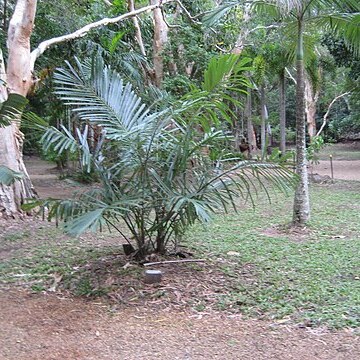Large clustering palm to 20 m high; stems to 30 cm diam. Leaves to 4 m long, with pinnae in 2 planes. Pinnae 40–80 cm long, dark green adaxially, with dense grey indumentum abaxially. Inflorescences to 200 cm long, produced basipetally, branched to 1 order. Staminate flowers 14–16 mm long, 10 mm wide; stamens 18–24. Pistillate flowers slightly larger than staminate flowers. Fruit globose, 8–28 mm wide, red. Seeds 2 or 3.

